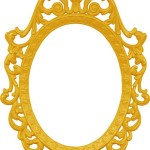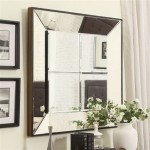How To Screen Mirror iPhone with Macbook
Screen mirroring allows users to display the content of an iPhone's screen on a larger display, such as a Macbook. This functionality proves useful for presentations, demonstrations, and enjoying media on a bigger screen. Several methods exist for mirroring an iPhone to a Macbook, each with its own advantages and limitations.
Using QuickTime Player
QuickTime Player, a pre-installed application on macOS, offers a straightforward screen mirroring solution.
- Connect the iPhone to the Macbook using a Lightning cable.
- Open QuickTime Player on the Macbook.
- Select "File" from the menu bar.
- Choose "New Movie Recording".
- Click the dropdown arrow next to the record button.
- Select the connected iPhone as the camera and microphone input.
- The iPhone's screen will then be mirrored on the Macbook's display.
Utilizing AirPlay with a Compatible App
AirPlay facilitates wireless screen mirroring to compatible applications on macOS. Several third-party apps provide this functionality, often with added features like recording and streaming.
- Ensure the iPhone and Macbook are connected to the same Wi-Fi network.
- Open a compatible AirPlay receiver application on the Macbook (e.g., Reflector, AirServer).
- Open Control Center on the iPhone.
- Tap "Screen Mirroring".
- Select the Macbook from the list of available devices.
- The iPhone's screen will be mirrored wirelessly to the Macbook.
Screen Mirroring for Development with Xcode
Xcode, Apple's integrated development environment (IDE), provides tools for mirroring and debugging iOS apps during development.
- Connect the iPhone to the Macbook with a Lightning cable.
- Open Xcode on the Macbook.
- Select “Window” from the menu bar.
- Choose "Devices and Simulators".
- Select the connected iPhone from the left sidebar.
- Click the "Open" button to initiate screen mirroring.
Benefits of Wired Connection (QuickTime Player and Xcode)
Wired connections offer specific advantages for certain use cases.
- Lower Latency: Wired connections generally exhibit lower latency compared to wireless mirroring, making them suitable for activities where real-time responsiveness is crucial, such as gaming or interactive demonstrations.
- Stable Connection: A wired connection provides a more stable and reliable mirroring experience, minimizing interruptions and connection drops.
- No Network Dependency: Wired mirroring bypasses the need for a Wi-Fi network, enabling mirroring in environments without network access.
Benefits of Wireless Connection (AirPlay)
Wireless mirroring with AirPlay provides flexibility and convenience.
- Freedom of Movement: Wireless mirroring allows for greater freedom of movement, as the iPhone doesn't need to be physically tethered to the Macbook.
- Suitable for Presentations: This method is well-suited for presentations and larger displays where cable management might be cumbersome.
- Compatibility with Specific Apps: AirPlay integrates with specific applications, offering functionalities like recording and streaming the mirrored content.
Troubleshooting Common Issues
Occasionally, users may encounter difficulties when attempting to mirror their iPhone screen to a Macbook. The following steps address common issues.
- Check Connections: Verify that cables are securely connected or that both devices are on the same Wi-Fi network.
- Restart Devices: Restarting both the iPhone and Macbook can often resolve temporary software glitches.
- Update Software: Ensure both devices are running the latest versions of their respective operating systems.
- Firewall Settings: Check firewall settings on the Macbook to ensure they are not blocking the connection.
- Check AirPlay Receiver App (If Applicable): If using a third-party AirPlay receiver app, verify that it is running correctly and that the iPhone is selected as the source.
Choosing the Right Method
The optimal method for screen mirroring depends on the specific requirements of the task.
- QuickTime Player: Best suited for quick, wired mirroring when minimal latency is required, or when recording the iPhone's screen.
- AirPlay with Compatible Apps: Ideal for wireless presentations and scenarios requiring freedom of movement, particularly when leveraging additional features like recording and streaming.
- Xcode: Specifically designed for iOS app development and debugging.
By understanding the different methods and their respective strengths, users can select the most appropriate approach for their screen mirroring needs, ensuring a smooth and efficient mirroring experience.

How To Mirror Iphone Mac 2024

2024 How To Mirror Iphone Display Mac Ios 14 And Big Sur

2024 Updated How To Mirror Iphone Mac With 5 Methods

How To Mirror Iphone Display Macbook Ios 12 Macos Mojave

2024 Updated How To Mirror Iphone Mac With 5 Methods

How To Mirror Iphone Screen Mac Free And Easy

How To Mirror Iphone Mac Without Wi Fi

5 Easy Steps To Mirror Iphone Mac Istreamer
:max_bytes(150000):strip_icc()/002_how-to-mirror-an-iphone-to-a-mac-4771947-e0f5e8ec9b094f019dd28384d25d1bc6.jpg?strip=all)
How To Mirror An Iphone A Mac

How To Use Apple Airplay Mirror Your Iphone Mac Screen On Tv Roku And More Cnet








